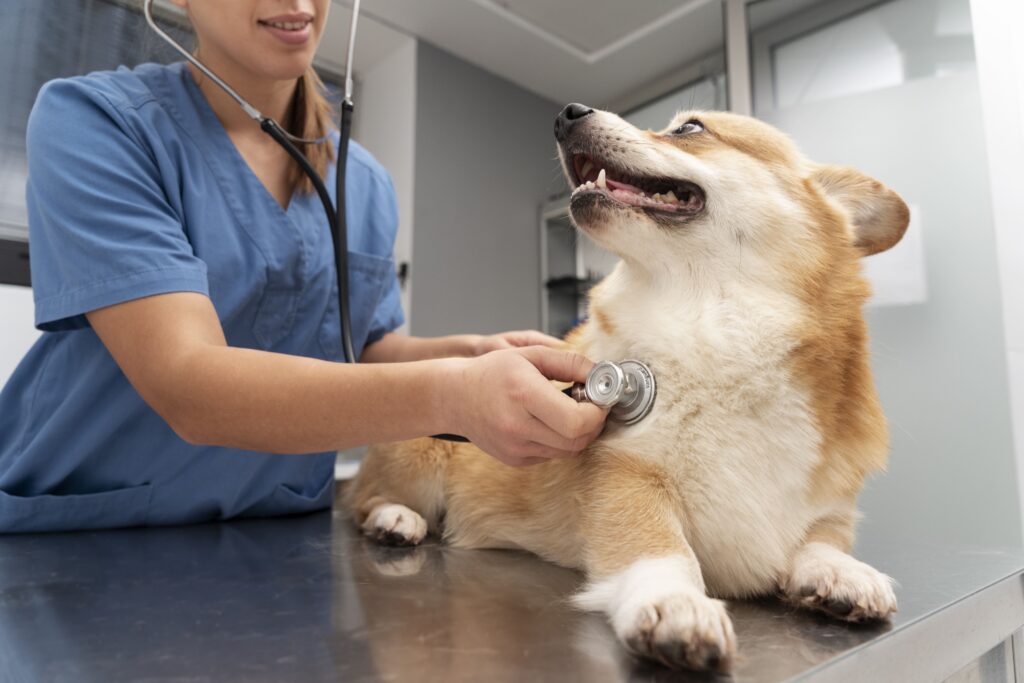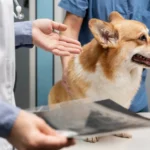
Contents
- 1 Why Emergency Care Matters
- 2 Signs That Require Immediate Veterinary Care
- 3 What to Do While Waiting to Get to the Vet
- 4 Common Emergencies That Require Immediate Attention
- 5 How to Protect Your Dog from Emergencies
- 6 When to Call North MS Pet Emergency
- 7 Conclusion
- 8 Frequently Asked Questions about Dog Emergencies
Sudden illness or injury in dogs can be a terrifying experience for any pet owner. It’s important to recognize that while some situations may seem manageable, others are true emergencies that require immediate veterinary care. Knowing when to take a dog to an emergency vet is crucial for ensuring that your pet receives the best care at the right time. Delaying treatment can worsen a condition and significantly impact your dog’s health and recovery.
In this blog, we’ll guide you through the most common dog emergencies and their symptoms, so you know exactly when it’s time to act. We’ll also provide useful tips on what to do in those critical first moments, before heading to an emergency vet.
Why Emergency Care Matters
Pet emergencies can escalate quickly. The right treatment at the right time can make a significant difference in your dog’s health outcomes. Here’s why veterinary urgent care is so important:
- Prevents minor issues from becoming life-threatening: Sometimes, what seems like a small issue (like a mild limp) can be indicative of something more serious, like a broken bone or soft tissue injury. Immediate treatment prevents further complications.
- Stabilizes your pet in life-threatening situations: In cases of severe trauma, poisoning, or breathing difficulties, quick intervention can save your pet’s life.
- Reduces pain and discomfort: Pets, especially dogs, don’t always show how much they’re suffering. Emergency treatment can manage their pain and reduce unnecessary suffering.
Knowing how to identify a dog emergency can help ensure your pet receives prompt attention.
Signs That Require Immediate Veterinary Care
It can be challenging to determine whether your dog’s symptoms are a result of a minor issue or something more serious. Here are some key signs that indicate it’s time to head to the emergency vet:
1. Difficulty Breathing or Rapid Breathing
Breathing issues are always a red flag. If your dog is gasping for air, breathing heavily, or struggling to breathe, it may be a sign of respiratory distress, which requires immediate veterinary intervention. Conditions like dog heatstroke, heart failure, or respiratory infections can cause severe difficulty breathing. If left untreated, it can be life-threatening.
2. Sudden Weakness, Lethargy, or Collapse
If your dog suddenly becomes lethargic, collapses, or loses the ability to move, it is important to seek emergency care for pets right away. This could be a sign of several conditions, including severe trauma, heart problems, or poisoning. For example, conditions like tick paralysis or severe blood loss can cause sudden weakness and collapse.
3. Persistent Vomiting or Diarrhea
If your dog is vomiting continuously or has bloody diarrhea, this can lead to dehydration and other complications. Infections, toxins, or even acute kidney failure may cause these symptoms. If the vomiting doesn’t stop after a few hours or if your dog seems weak or lethargic, it’s time to see an emergency vet.
4. Excessive Drooling or Swelling
Excessive drooling or noticeable swelling around the face, neck, or body can be signs of poisoning, allergic reactions, or trauma. For instance, dogs who’ve ingested toxic substances (like chocolate, rat poison, or pesticides) may start drooling excessively. Swelling can also indicate a snake bite, severe allergic reaction, or internal bleeding.
5. Severe Pain or Restlessness
Pain is a serious concern, and dogs often try to hide it. If your dog is showing signs of distress, panting excessively, restlessness, or refusing to move, it could indicate severe pain. This is often seen in situations like a dog’s broken leg, dog heatstroke, or a ruptured organ.
6. Ingestion of Toxic Substances
If your dog eats something they shouldn’t, it’s critical to act quickly. Common toxic substances include medications, chocolate, grapes, onions, and pesticides. The symptoms may not appear right away, but if you believe your dog has ingested something toxic, take them to an emergency vet immediately. Knowing what your dog ate can be helpful for the vet in determining the treatment.
7. Seizures
Seizures or involuntary muscle spasms can be caused by a variety of conditions, including epilepsy, poisoning, or a brain injury. If your dog has a seizure or shows tremors, seek immediate veterinary attention, as seizures can cause secondary damage or be a sign of a serious condition.
8. Severe Bleeding
If your dog has a deep cut, gash, or injury that causes significant bleeding, apply pressure to the wound with a clean cloth to stop the bleeding and head straight to an emergency vet. Internal bleeding, like from a ruptured spleen or abdominal injury, may also not be immediately visible but is equally life-threatening.
What to Do While Waiting to Get to the Vet
In case of an emergency, there are a few steps you can take before heading to the clinic:
- Stay Calm: Pets can sense your anxiety, and remaining calm will help them stay calmer as well.
- Limit Movement: If your dog has been injured, limit their movement to prevent worsening of the injury.
- Apply First Aid: Apply pressure to stop bleeding, cover your dog with a blanket if they are in shock, and keep them warm if they’re cold.
- Transport Safely: Use a dog carrier or blanket to support their body while moving them to the car. Try to avoid excessive movement.
If your dog is exhibiting symptoms like difficulty breathing, carry them in a safe manner and take them to an emergency clinic immediately.
Common Emergencies That Require Immediate Attention
Some dog emergencies are more common than others and include:
- Dog broken leg: A fall, accident, or trauma can result in a broken leg, causing pain, swelling and immobility. Immediate treatment is required to prevent further injury and ensure proper healing.
- Dog heatstroke: Heatstroke occurs when a dog’s body overheats, especially during hot weather or intense physical activity. Symptoms include excessive panting, lethargy and disorientation, requiring immediate cooling and professional care.
- Poisoning: Poisoning from ingestion of household toxins, plants or chemicals can quickly lead to severe symptoms like vomiting, diarrhea, or seizures. Fast action is crucial for treatment and preventing life-threatening complications.
- Dog seizures: Seizures in dogs, often caused by epilepsy, toxins or brain injuries, are serious and need immediate veterinary attention to ensure safe recovery and prevent long-term damage or injury to your dog.
- Severe bleeding: Severe bleeding from trauma, deep cuts, or accidents can lead to shock and organ failure. Apply pressure to the wound and seek emergency care to stop bleeding and stabilize your dog.
Knowing these conditions and their symptoms will help you take your dog to the emergency veterinarians as soon as possible. As the impact of delayed emergency care can be harmful to your pet.
How to Protect Your Dog from Emergencies
While it’s impossible to predict when an emergency might happen, you can reduce the risk of common injuries and illnesses by following these tips:
- Prevent exposure to toxins: Keep harmful substances out of your dog’s reach and monitor what they eat when outside.
- Maintain a healthy weight: Overweight dogs are more prone to health issues like heatstroke, joint injuries and heart problems.
- Regular vet checkups: Regular checkups can catch issues like heart disease, kidney problems, or early signs of dog seizures before they become emergencies.
- Hydration and temperature control: In hot weather, make sure your dog stays hydrated and avoids heat exposure.
When to Call North MS Pet Emergency
If you believe your dog is in need of emergency care, don’t hesitate to contact us. At North MS Pet Emergency, we specialize in providing immediate medical attention for all types of pet emergencies, from dog heatstroke to severe trauma and toxin exposure. Our team is available after hours and ready to treat your dog promptly and effectively.
Whether it’s a sudden injury or an illness that requires urgent care, North MS Pet Emergency is here to help you ensure your pet’s health and safety.
Conclusion
Knowing when to take a dog to the emergency vet is crucial for protecting your pet’s health. Recognizing symptoms like difficulty breathing, severe pain, or vomiting can help you act quickly and get your dog the care they need. Don’t hesitate to seek immediate attention if you think your dog is in danger.
At North MS Pet Emergency, we are here to provide expert emergency care for pets. Whether it’s an accident, illness, or sudden injury, we are ready to help. If your dog is showing signs of an emergency, don’t wait, contact us now for immediate care.
Contact Us Now for emergency care, or visit us for after-hours care.
Frequently Asked Questions about Dog Emergencies
1. When should I take my dog to the emergency vet?
If your dog shows signs of serious injury or illness, such as difficulty breathing, excessive bleeding, sudden weakness, seizures, or unconsciousness, it’s time to visit the emergency vet. Quick action could save your dog’s life.
2. When is vomiting a sign of a pet emergency?
Vomiting that lasts for more than a few hours, especially if accompanied by lethargy, blood, or other symptoms, can indicate a serious issue like poisoning, infection, or internal injury. Visit the emergency vet if concerned.
3. Can I bring my dog to the ER with me?
While most emergency vet clinics do not allow owners to accompany their pets inside, many will provide updates via phone. Check with the clinic beforehand to understand their protocols and ensure your dog gets the care they need.
4. What symptoms constitute a pet emergency?
Signs like severe bleeding, trouble breathing, seizures, unconsciousness, or sudden weakness are clear indicators of an emergency. For non-obvious conditions, it’s always better to be cautious and consult an emergency vet immediately.
5. Should I take my dog to the emergency vet for a seizure?
Yes, seizures are a serious sign of a neurological emergency. Even if it’s the first time, you should seek immediate veterinary care. Prompt treatment can help manage the condition and prevent future episodes.




